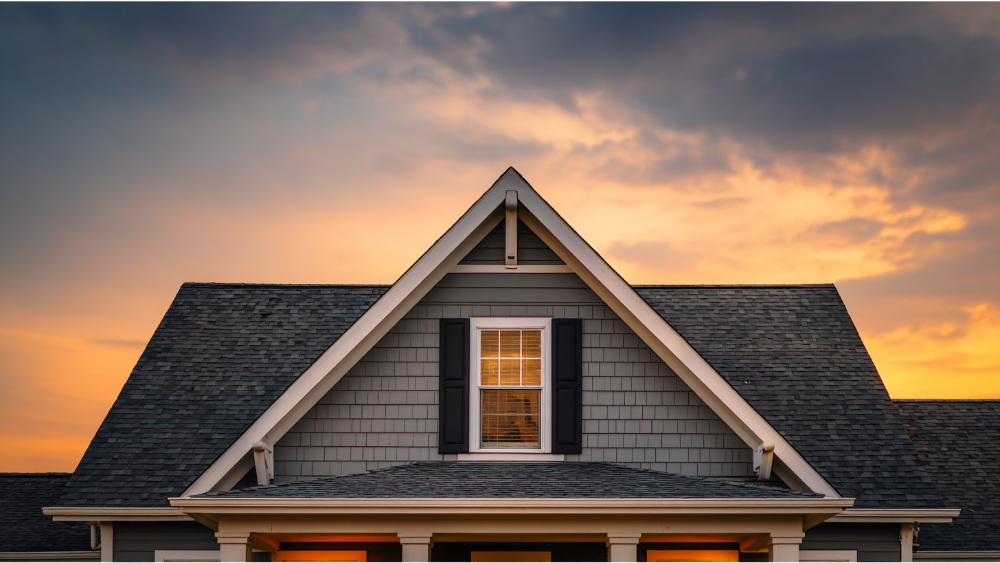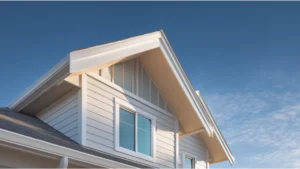Understanding the Basics – What Is A Gable Roof?
A gable roof is one of the most recognizable and traditional roof styles in residential construction, and for good reason. Defined by two sloping sides meeting at a central ridge, it creates a triangular extension at each end of the home, known as a gable. This gable roof sections design gives both aesthetic appeal and functional benefits, forming a rectangular shape on the overall roof footprint. Unlike flat surface roofs, a pitched roof, like the standard gable, dramatically improves curb appeal while naturally channeling rainwater and snow off the surface.
This simple construction also features overhanging eaves, helping protect walls and windows from weather damage. The result is a durable and low-maintenance roof type that performs well in diverse conditions. And if you prefer gable roofs, you’re in good company, this style remains a top choice across America, from New England to the East Coast, especially in temperate climates and even cold climates that demand extra performance during snow season.
The most distinctive part of a gable roof is its triangular gable, a feature formed by the roof’s two sloping sides running in opposite directions. This triangular shape not only defines the look of the home but also supports the natural movement of water and air, making it one of the smartest choices when selecting the right roof for both new builds and renovations.
Gable Roof Advantages for California Homeowners
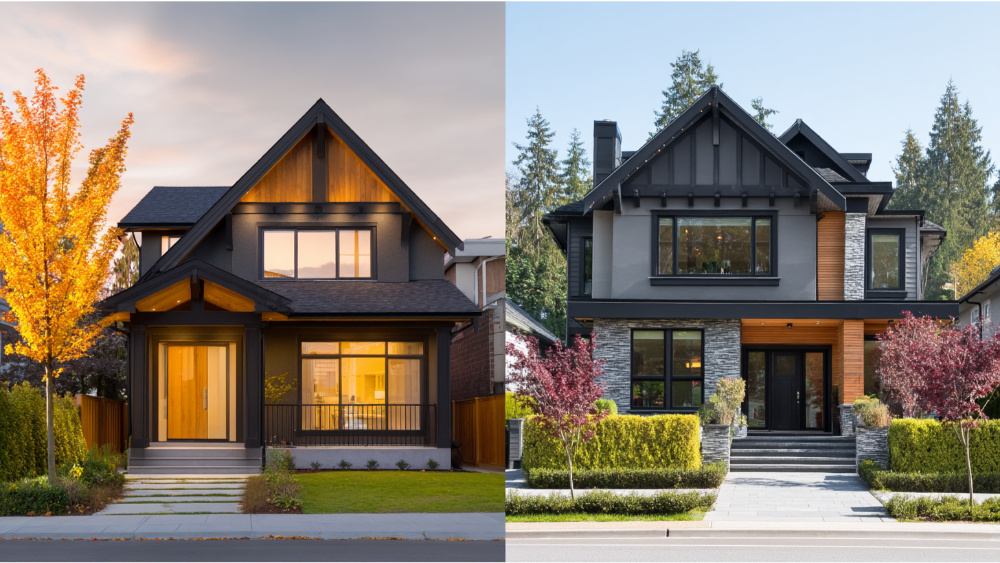
Simple Construction with Quality Materials
One of the biggest benefits of a gable roof is its simple construction. With diagonal bracing and fewer materials compared to complex designs like mansard roof or gambrel roof, installation is faster and more affordable. Fewer angles and structural complexities mean fewer things can go wrong during a project. It’s a reliable approach that works well whether you’re building a custom home or replacing an aging roof.
Cobex uses quality materials that hold up under the variable weather of Northern California. Our team works efficiently and communicates every step of the way, making the process of installing a new roof as seamless as possible.
Excellent Drainage and Weather Resistance
The steep pitch and symmetrical design of a gable roof help water and snow slide off quickly, preventing buildup and leaks. These features make gable roofs naturally weather resistant, especially in hurricane-prone areas or cold climates where snow and ice could become an issue. The two gable roof sections direct water away from the structure, reducing the risk of mold, mildew, and moisture damage.
Still, like any roof, proper construction matters. Without the right bracing and material selection, gable roofs can be susceptible to wind damage, especially if the open gable ends are not adequately reinforced. At Cobex, we follow California’s strict wind-resistance codes and apply structural best practices to ensure each home’s safety.
Better Ventilation and More Interior Space
Because a gable roof creates more interior space and allows for better ventilation, many homeowners choose to include gable vents for extra airflow. Placed strategically on the triangular gable ends, these vents help expel hot air and moisture from the attic, reducing the load on your HVAC system and extending the lifespan of insulation and roofing materials.
The added height created by the roof’s triangular shape also gives you the option to finish the attic for storage or even extra living space. Compared to other roof types that offer less attic space, a standard gable can feel much more open and adaptable, especially when paired with good design and proper planning.
Overhanging Eaves and Natural Light
Many homeowners appreciate the functional and visual benefits of overhanging eaves. These eaves provide extra shade and protect siding and windows from rain and sun exposure. Aesthetically, they add a layer of depth and refinement to the roofline that contributes to the overall appeal of the home.
The gable design also allows natural light to filter into upper-level rooms or attics through dormers, skylights, or vertical windows in the triangular gable ends. This added natural light creates a warmer, more inviting interior while potentially lowering electricity usage during daylight hours.
Ideal for Solar Integration and Improved Curb Appeal
The wide, sloped planes of a gable roof, often facing opposite directions, are ideal for solar panel placement. These surfaces provide flexibility for panel alignment, optimizing sun exposure for both east- and west-facing installations. As a result, gable roofs are especially attractive for homeowners looking to add solar and reduce long-term energy costs.
Combined with attractive trim, dormers, and gable vents, the gable roof significantly improves curb appeal. Whether you’re staying in your home long-term or preparing it for resale, this roof type makes a strong visual and functional impression.
Gable Roof Disadvantages and Considerations
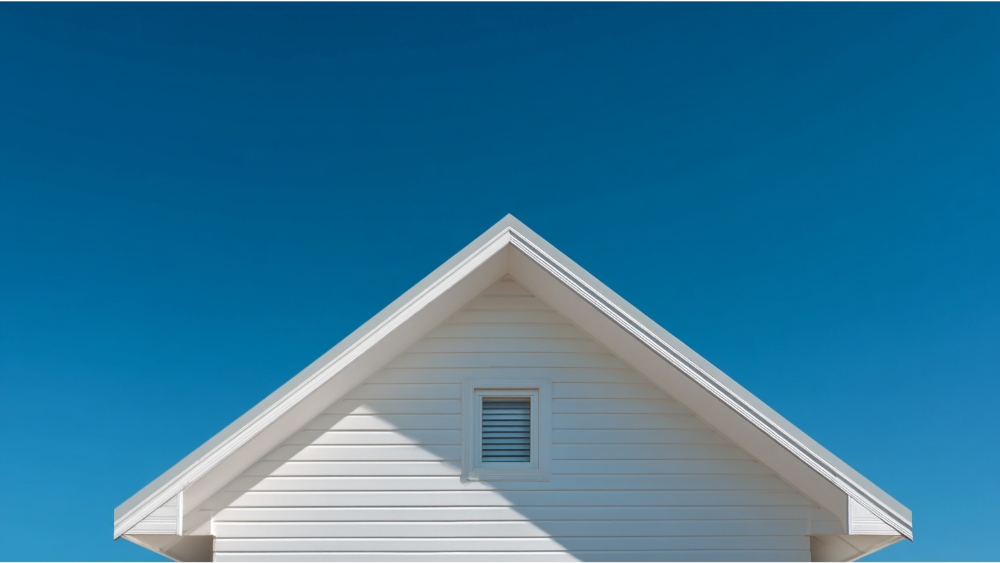
Susceptibility to Strong Winds
Although overall weather resistant, gable designs can be vulnerable to wind damage if not properly constructed. The open gable ends can catch strong gusts, especially during storms, and cause uplift pressure that could compromise the framing. This is where hiring a qualified local contractor makes a big difference.
Cobex builds every gable with added diagonal bracing, reinforced ridges, and securely installed gable vents to prevent these issues. In hurricane-prone areas or regions with seasonal wind patterns, we’ll also recommend additional reinforcement strategies tailored to your location.
Less Attic Space Compared to Other Types of Gable
Some homeowners discover that more complex roof styles, like a gambrel roof or mansard roof, offer greater headroom or finished attic possibilities. If you’re planning an upper-level renovation or bonus room, this is worth considering. That said, the triangular shape of a gable roof still offers excellent usability, especially with smart insulation and ventilation strategies in place.
Maintenance Around Vertical Ends
The vertical ends of the gable, where the triangular gable forms, need careful attention over time. Gable vents, flashing, siding joints, and decorative trim can be points of entry for water or pests if not maintained properly. Routine inspections and seasonal maintenance will protect your investment and ensure long-term performance.
Exploring Gable Roof Design Options for Your Home

Side Gable (Standard Gable Design)
This classic roof type features two pitched slopes that meet in the center and form a triangular gable at each end. It’s one of the simplest and most widely used configurations, commonly found on ranch and suburban homes throughout California. The symmetrical design makes it easy to ventilate and insulate, while the slope improves water runoff.
Front Gable
This variation places the triangular gable at the front of the home, creating visual emphasis and framing the entryway. It’s a hallmark of Colonial and Cape-style architecture, especially in New England and other parts of the East Coastwhere historic design meets functionality.
Cross Gable (Two Gable Roof Sections)
The cross gable design involves two or more gable roof sections intersecting at right angles. This configuration adds dimension and can create more complex internal layouts. It’s ideal for larger homes or remodels with multiple wings. Cross gables often include dormers, custom gable vents, or extended eaves for added style.
Dutch Gable Roof
The Dutch gable roof combines a gable and a hip roof. The hip adds strength and weather protection, while the triangular gable above provides ventilation and architectural character. This hybrid is well-suited to high-wind areas and adds a unique twist to more traditional gable layouts.
Box Gable
Box gables enclose the open ends of the triangular gable, providing a box-like finish that protects the home’s edges from water intrusion. This design looks clean, modern, and offers solid integration for vents, trim, and insulation.
Gambrel Roof & Mansard Roof Comparisons
Though not technically gables, gambrel and mansard roofs use sloped sides for similar visual appeal. A gambrel roof has two slopes per side, steep at the bottom and shallow at the top, providing generous attic space. A mansard roof has four sides and a nearly flat upper surface. Both are good for more interior space, but they often require more complex framing and finishing.
Gable Roofs vs. Flat Roofs – How They Compare
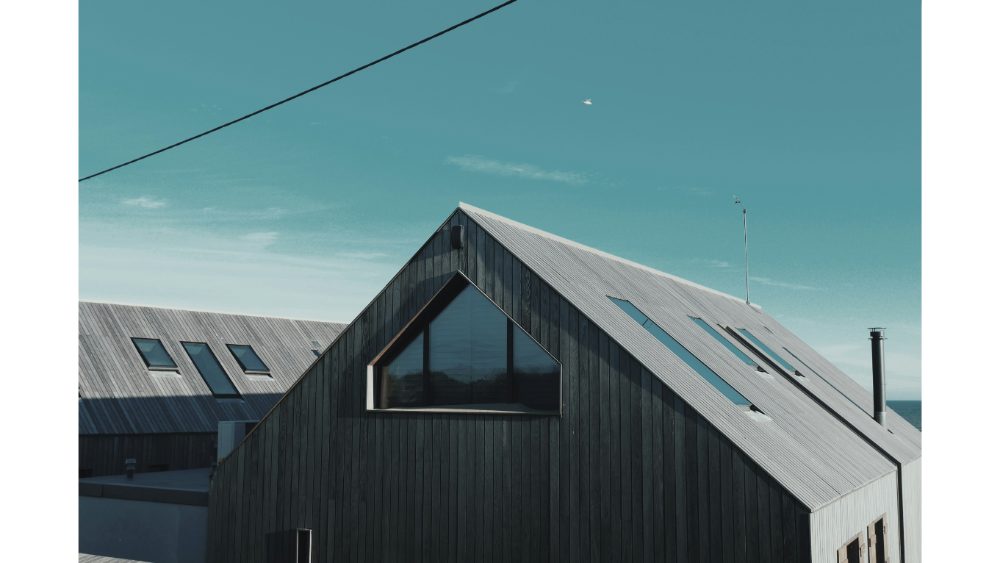
Flat Roof vs. Gable Roof Design Differences
Flat roofs have little to no slope and depend on engineered drainage systems to handle rain. They may look modern but come with added waterproofing demands. A gable’s triangular shape naturally encourages water runoff and reduces risk over time.
Interior Space and Natural Light
Gable roofs create vaulted ceilings and open attics, features that invite natural light and improve the perception of space. Flat surface roofs can’t match this without creative construction. The triangular extension also gives homeowners more flexibility for interior upgrades.
Energy Efficiency
Because gable roofs support better ventilation through attic airflow, ridge vents, and gable vents, they tend to be more energy-efficient in climates with temperature swings. Flat roofs require thicker insulation and cooling strategies to meet California’s Title 24 building standards.
Gable Roofs vs. Hip Roofs and Pyramid Roofs
Gable vs. Hip vs. Pyramid Roof
A hip roof design slopes downward on all four sides, offering increased resistance to wind damage. A pyramid roof is a variation of a hip with all sides meeting at a single point. Both are excellent for high-wind zones but reduce usable attic space. Gable roofs strike the best balance for homeowners who value performance, style, and interior space.
Choosing the Right Type of Roof
Choosing the right roof depends on your goals: attic access, solar readiness, aesthetics, and cost. For most single-family homes in Sacramento, Roseville, and beyond, the gable remains a reliable, high-performing option. Our Cobex team helps you compare every roof type side-by-side to ensure the smartest long-term investment.
Other Gable Roof Considerations
Gable Vents and Extra Ventilation
Gable vent placement is key to maximizing airflow and reducing attic heat. When paired with soffit or ridge vents, gables enhance your home’s ventilation, keeping it cooler in summer and dryer in winter.
Overhanging Eaves and Flashing
Overhanging eaves protect your siding, windows, and walls while helping control runoff. We always install flashing at vulnerable points, ensuring a tight, waterproof seal around all gable connections.
Connecting Gable Sections and Multi-Wing Houses
Homes with wings or additions often benefit from two gable roof sections. These layouts create architectural interest, allow for zone-specific ventilation, and enhance solar panel layout across multiple roof planes.
When Should You Choose a Gable Roof?
A gable roof is the go-to roof type for most new roof construction and roof replacement projects. It offers clear benefits: drainage, simplicity, storage space, and long-term value. If you’re in Northern California and want a durable, energy-smart design with strong curb appeal, the gable is often the right roof choice.
Why Homeowners Trust Cobex for Gable Roof Installations
Cobex has designed and installed hundreds of gable roofs throughout Northern California. We use quality materials, follow strict code requirements, and communicate clearly every step of the way. Whether you want a triangular gablewith a clean box finish or a hybrid style for a modern build, we’ll help you get the job done right.
Visit our roofing services page to learn why homeowners trust Cobex for everything from standard gables to custom roofs.
Frequently Asked What Is A Gable Roof Questions
What’s the difference between a gable roof and a hip roof?
Gable roofs slope on two sides and have vertical ends, while hip roofs slope on four. Hip roofs offer better wind resistance, but gables offer more attic space and simple construction.
Are gable roofs good for solar panels?
Yes. Their opposite directions and wide slope allow flexible solar layouts and efficient sun capture.
Can gable roofs be repaired, or do they need full replacement?
Repairs are possible for leaks, vent issues, or storm damage. But if your roof is aging, a new roof may offer better performance and peace of mind.
What home styles work best with gable roofs?
Gables are ideal for Colonial, Craftsman, Farmhouse, and Modern homes. The triangular shape adapts well to almost any design.
How long will a gable roof last in Northern California?
With proper care, a gable roof built by Cobex lasts 25–50 years. We recommend annual inspections and vent maintenance to get the most from your investment.
Ready to Start Your Gable Roof Project?
If you’re ready to upgrade your home with a gable design that delivers on strength, energy efficiency, and timeless appeal, Cobex Construction Group is ready to help. Whether you’re looking for a classic A-frame, a modern box gable, or a cross gable roof that adds complexity and style to a larger home, we have the experience and craftsmanship to bring your vision to life.
We proudly serve Sacramento, Roseville, Redding, and surrounding areas with expert roofing solutions you can count on. From traditional side gables to custom cross gable roofs with dormers and multiple elevations, our team ensures every detail is right, no matter the section of your home being improved.
Contact us to schedule your free estimate. Let’s build the right roof together.
